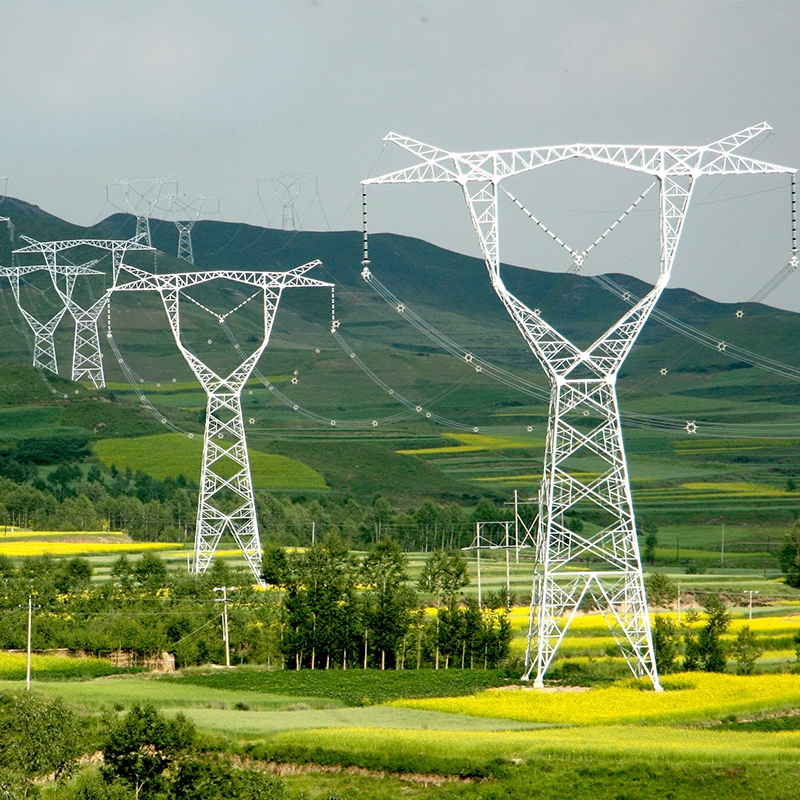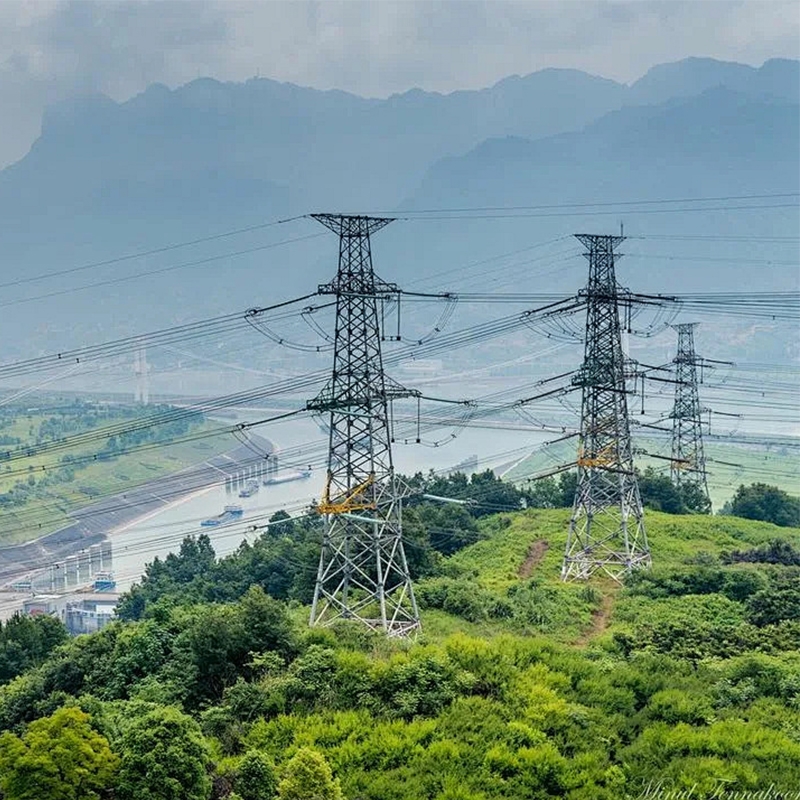Transformer: The core hub for power transmission and conversion
I. Basic Principles of Transformers: A Sophisticated Interpretation of Electromagnetic Induction
The operation of a transformer is based on the law of electromagnetic induction, and its core components consist of an iron core and primary and secondary coils wound around it. When alternating current flows into the primary coil, it will generate an alternating magnetic field in the core. Due to the high magnetic permeability of the core, the magnetic field is highly concentrated and coupled to the secondary coil. According to Faraday's law of electromagnetic induction, an alternating magnetic field induces an electromotive force in the secondary coil. If the number of turns in the secondary coil is different from that in the primary coil, the voltage transformation is achieved. The formula is expressed as: U_1/U_2 = N_1/N_2, where U_1 and U_2 are the primary and secondary voltages respectively, and N_1 and N_2 are the corresponding number of coil turns. This simple yet exquisite principle has laid the foundation for the flexible allocation of electricity.
Ii. Classification of Transformers: Multiple Architectures, Each demonstrating its Unique capabilities
Power Transformer: As the backbone of power transmission, it is large in size and commonly found in substations. There are step-up types, such as hydropower stations that increase the low voltage (usually around 10kV) generated by generators to ultra-high voltage (such as 220kV, 500kV or even higher), reducing transmission losses and enabling long-distance "rushing" to cities. The step-down type "stands guard" in the urban distribution network, gradually reducing the high voltage to 220V for residential use or 380V for industrial use, ensuring safe and stable power supply. Its capacity can reach several gigawatt-amperes, capable of handling the flow of huge amounts of electricity.
Distribution transformer: Penetrating deep into the power supply terminals of urban and rural areas, it directly serves the end users. The general capacity ranges from tens to hundreds of kilovolt-amperes. It is installed on utility poles, in community distribution rooms and other places, converting medium-voltage distribution network voltage (such as 10kV) into daily electricity needs. It focuses on energy conservation, low noise and reliability, lighting up the lights and driving electrical appliances for thousands of households. It is the closest power "mover" to life.
Dry-type transformers: With special insulating media, they use solid materials such as epoxy resin, eliminating the flammable risk of oil-immersed types. They are suitable for places with strict requirements for fire prevention and explosion prevention, such as shopping malls, hospitals, data centers, and other densely populated and valuable equipment areas. They provide reliable power conversion within limited Spaces. Although heat dissipation is relatively difficult, they have firmly occupied a place in the market due to their safety advantages.
Oil-immersed transformers: Filled with mineral oil or insulating oil for heat dissipation and insulation, they have high heat dissipation efficiency and can operate under high loads. They are widely used in outdoor substations, industrial plants and other open areas. Large capacity and long service life are their labels. However, they need to be equipped with oil leakage prevention and fire prevention facilities to ensure environmental safety.
Iii. Key Parameters of Transformers: Accurately measure performance
Rated capacity: It characterizes the maximum capacity of a transformer to transmit electrical energy, with units of kilovolt-ampere (kVA) or megavolt-ampere (MVA). It determines whether the transformer can meet the load demand. For instance, if a small factory estimates that the peak electricity consumption is 500kVA, the rated capacity of the selected distribution transformer must be compatible; otherwise, it will lead to overload, overheating and damage, or overuse and cost waste.
Rated voltage: It covers the primary and secondary rated values, specifying the voltage level at which the transformer operates normally, and precisely matches the power grid and electrical equipment. The primary rated voltage of the power transformer connected to the 110kV line on the power grid side is 110kV, and the secondary voltage is set to 10kV, etc. according to the voltage reduction requirements. Once the voltage deviation is large, it not only affects the transmission efficiency but may also impact the electrical equipment, causing faults.
Voltage transformation ratio: Determined by the turns ratio of the coil, it directly reflects the amplitude of voltage transformation. The transformer voltage ratio inside the mobile phone charger is carefully designed to precisely reduce the 220V mains power to 5V or 9V, etc., suitable for the mobile phone battery, ensuring safe and efficient charging. The voltage increase and decrease operations in the power system strictly follow the voltage transformation ratio to ensure that the electrical energy flows as planned.
No-load loss and load loss: No-load loss refers to the energy consumption when the primary is energized and the secondary is open-circuited. It originates from the hysteresis and eddy current of the core and reflects the energy consumption characteristics of the transformer itself. Low no-load loss is conducive to energy conservation. For instance, new energy-saving distribution transformers have significant advantages in this regard. The load loss increases with the increase of the load current, which is caused by the heating of the coil resistance. To measure the operating efficiency of the transformer under load, the trade-off and optimization of the two are the key points in the design.
Iv. Transformer Manufacturing Process: Craftsmanship builds the Core of power
Core manufacturing: The selection of core materials is meticulous, with silicon steel sheets being the top choice. Their high magnetic permeability and low hysteresis loss characteristics facilitate magnetic field conduction. Through stamping and laminating processes, silicon steel sheets are stacked layer by layer, with interlaced seams to reduce the magnetic resistance of the magnetic circuit. Then, they undergo annealing treatment to eliminate internal stress and enhance magnetic performance. During assembly, the air gap is strictly controlled to ensure uniform and tight coupling of the magnetic field.
Coil winding: According to the designed number of turns and wire diameter, select electromagnetic wire with good insulation. The winding machine precisely winds it, ensuring proper insulation between layers and turns. High-voltage windings are often wound in sections to enhance insulation. The process accuracy determines the electrical performance and reliability of the transformer. Even minor flaws may cause breakdown risks under high voltage.
Insulation treatment: Dry-type transformer epoxy resin casting, high-temperature curing and molding, fully wrapped coil, with moisture-proof, insulating and mechanical strength combined. Oil-immersed transformers strictly purify and dry the insulating oil to ensure good insulation and heat dissipation. During filling, air bubbles are strictly controlled to prevent partial discharge. A complete insulation system serves as a shield for the transformer to withstand high-voltage tests.
V. Application Cases of Transformers in Different Fields: Illuminating Life and Empowering Industries
Power transmission and distribution: The electricity from large-scale hydropower and thermal power bases is "assisted" by step-up transformers, crossing mountains, rivers and streams at ultra-high voltage, reaching the edge of the city, and then being stepped down and delivered to households by step-down transformers, ensuring a stable power supply from the roaring equipment in factories to the warm lights in homes. It is like the "power blood vessels" of the city, maintaining the pulse of operation.
Industrial manufacturing: Factory automated production lines have diverse demands for various types of motors and equipment. Transformers are used to reduce, isolate and stabilize voltage as needed, providing pure power for high-precision machine tools and ensuring processing accuracy. In high energy-consuming industries such as metallurgy and chemical engineering, high-power transformers, when matched with loads like electric arc furnaces and electrolytic cells, drive production processes and serve as the "behind-the-scenes drivers" of industrial power.
In the field of new energy: Solar photovoltaic power stations, the transformer inside the inverter converts the direct current into alternating current and raises it to the grid-connected voltage, which is then fed into the power grid. The output voltage of wind turbines fluctuates greatly. After dynamic voltage regulation by transformers, they are stably connected to the grid, facilitating the integration of green energy into the "big family" of power and promoting energy transformation.
Vi. Transformer Maintenance and Fault Diagnosis: Safeguarding the Lifeline of Power
Daily maintenance: Regularly inspect the appearance to check for any oil leakage or damage to the casing. Listen for the operating sound. A uniform humming sound is normal, while abnormal noise indicates loosening or partial discharge. Detect the oil temperature and winding temperature to prevent overheating. Test the insulation resistance to ensure good insulation. Clean up dust and debris in time to maintain the health of the transformer.
Fault diagnosis: Winding short circuit fault, manifested as sharp increase in current, soaring oil temperature, and differential protection action, is mostly due to insulation aging and overvoltage breakdown. Power-off maintenance and replacement of damaged windings are required. The multi-point grounding fault of the core causes local overheating and abnormal oil chromatography. Locate the grounding point and repair the insulation. Poor contact of the tap changer can cause voltage fluctuations and overheating. Precise adjustment and polishing of the contacts are the solutions to repair it. Professional operation and maintenance ensure the service life of the transformer.
Transformers, as the backbone of the power and electronics world, are closely linked from fundamental principles to complex applications, precise manufacturing, and meticulous maintenance. In-depth study of transformer knowledge is a compulsory course for electrical engineers and technicians to manage electrical energy and ensure power supply. It is also a solid support for modern society to move towards an era of efficient and intelligent power consumption.




